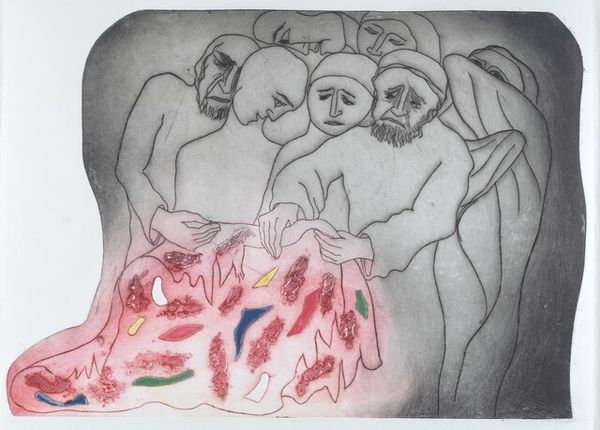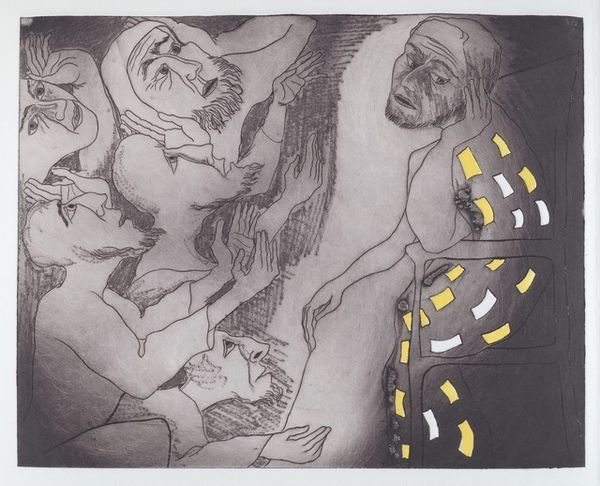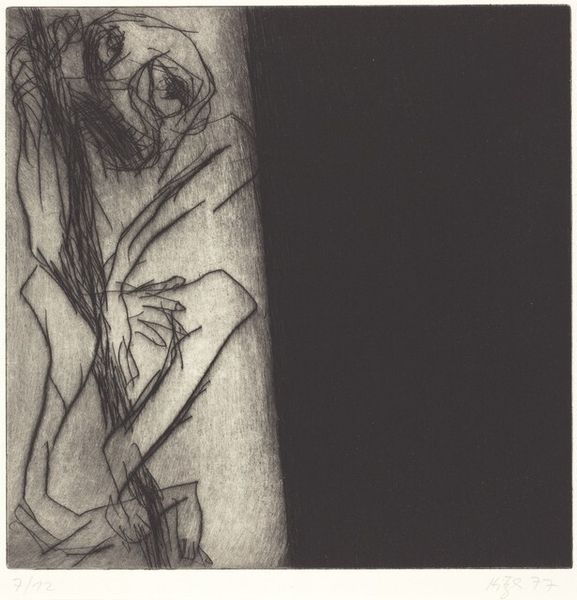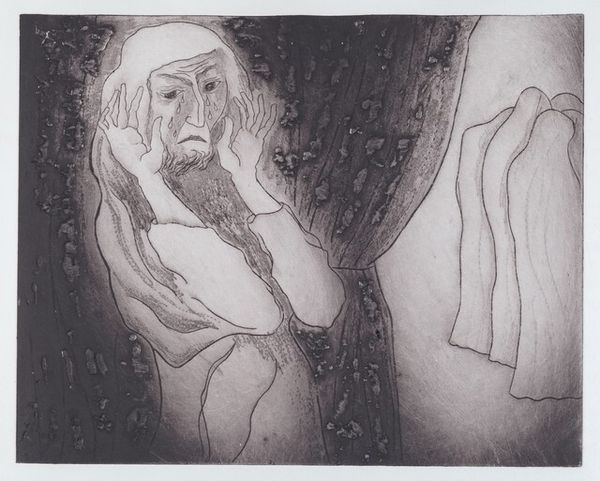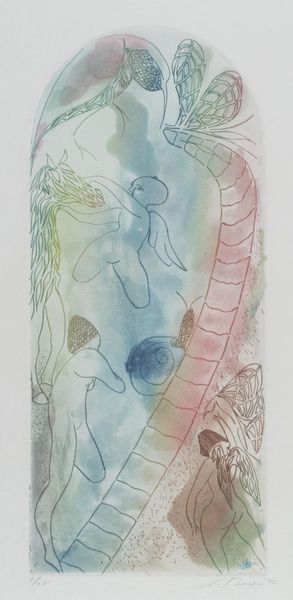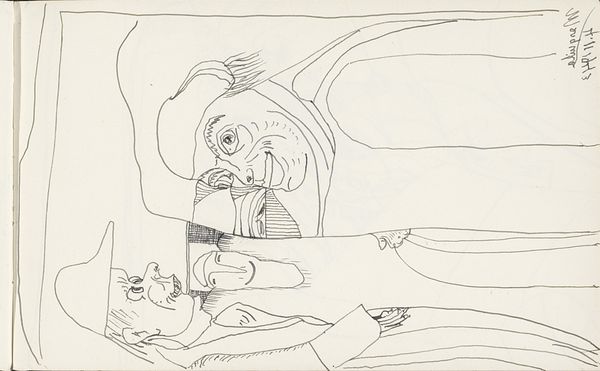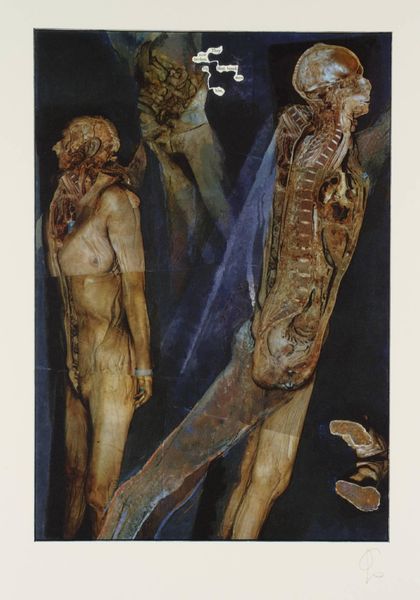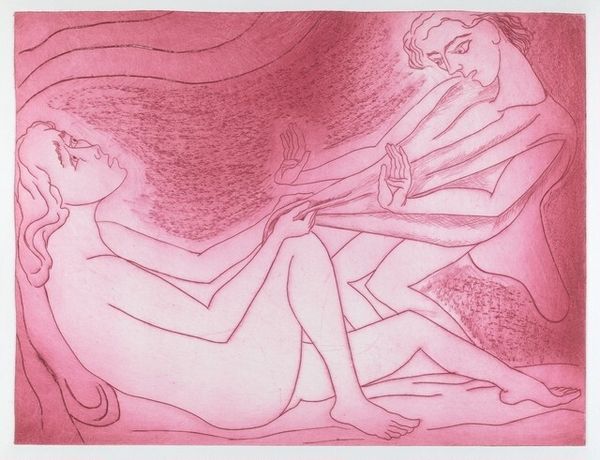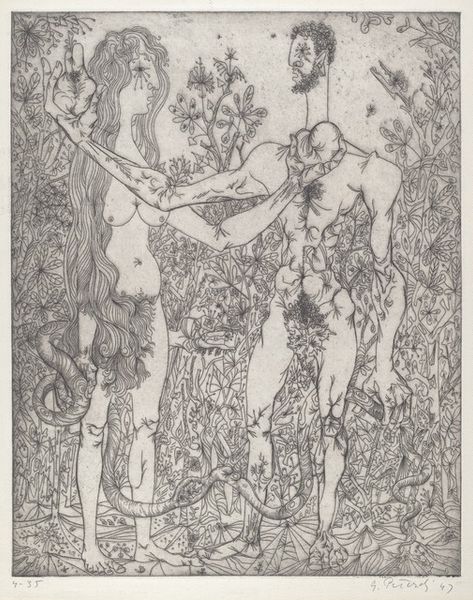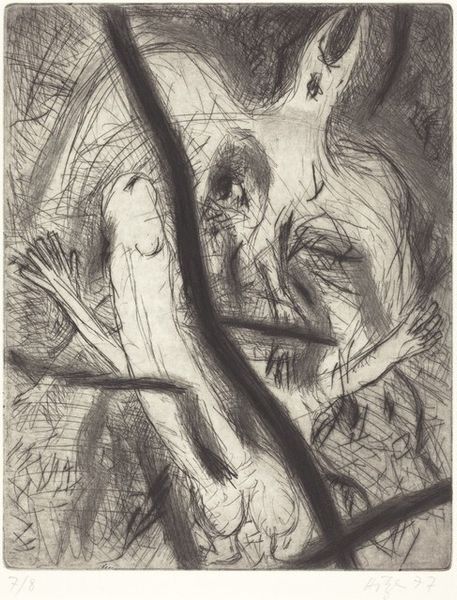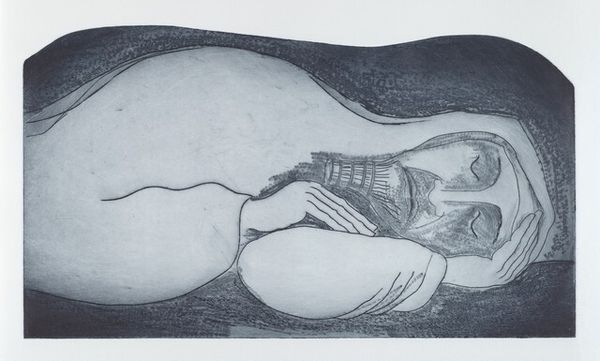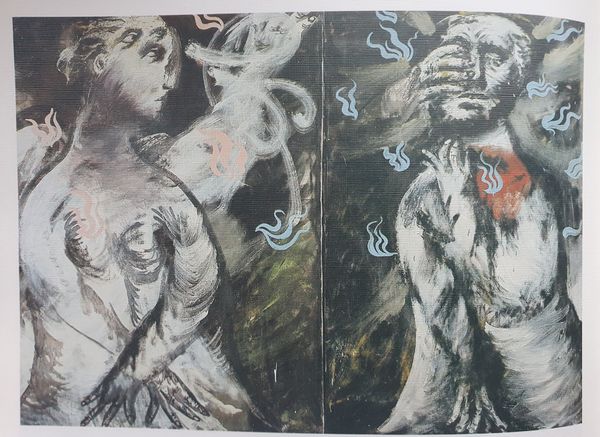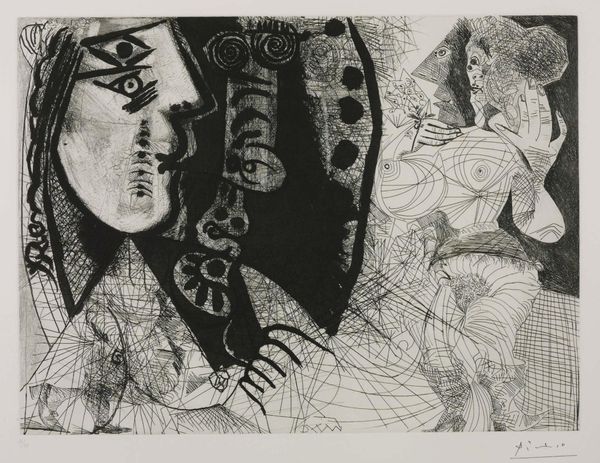
drawing, print, etching, intaglio
#
drawing
#
narrative-art
# print
#
etching
#
intaglio
#
figuration
Copyright: National Gallery of Art: CC0 1.0
Curator: Peter Lipman-Wulf created "Joseph and His Brothers IV" in 1966, an intaglio print showcasing the narrative themes. It strikes me first by the tonal variations achieved by the intaglio technique. What do you see? Editor: There’s a solemn weight to it. The almost ghostly figures emerge from this somber background. I can feel this ancestral burden hanging in the air, right? Curator: Right. The medium itself adds to the effect. The intaglio process requires the artist to physically etch into a metal plate, using acid to create depth and texture. This creates a transfer, layering ink to generate a palpable density and dimension. The narrative, coupled with this physical process, becomes profoundly textural. Editor: Yes! It makes me consider that act of telling, how a story itself gains texture each time we bring it forth, is manipulated or enhanced, depending on who is repeating it, their own lives adding nuances each time... Do you think Lipman-Wulf wanted to underline such a repetitive process? Curator: Well, examining Lipman-Wulf’s approach to the material is revealing. The etching enables fine, detailed linework to express deep emotion—and allows for multiple impressions, underscoring the repeatability of narrative traditions. Look closely, for instance, and you will perceive he even experiments with colour inserts into an otherwise grey print... Editor: See, I noticed that dash of vibrant colours but didn’t know how to consider them. Thanks for that. And tell me, what's with the recurring motifs of pointing fingers here? Curator: Good observation. The pointed gesture can carry various implications, it could signify blame, direction, instruction, or even accusation, but here they direct our eyes towards a particular direction of historical re-assessment. It all plays into understanding power dynamics here and broader social hierarchies. Editor: Interesting... The use of material speaks, you make me wonder to what extend my reading may differ to somebody without such detailed knowledge. Maybe somebody with more innocent eyes... What an amazing thing art is. Curator: Exactly, and understanding the materials and their historical applications lets us have access into the construction of its deeper social contexts. The point is really enriching an experience... Editor: Beautifully said. It encourages one to investigate more, to feel equipped... I leave inspired to learn how art interacts in its historical landscape and how the artist is also material to its time.
Comments
No comments
Be the first to comment and join the conversation on the ultimate creative platform.
